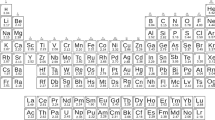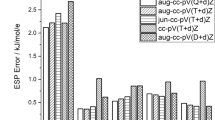Abstract
THERE is an increasing tendency on the part of organic chemists to apply the Berzelius dualistic theory, in a modified form, to organic compounds. In many theories of valency, individual groups are considered to be more or less electropositive or electronegative, and it is possible to arrange these groups, approximately, in a table of descending electropositive character. A difficulty which arises in examining this conception is to visualise the transference of anything less than one electron between the group and the remainder of the molecule. There appear to be at least two kinds of forces operating between atoms in a molecule, which can be designated as polar and non-polar. The polar character of the valency in the majority of salts is definite; there is experimental evidence for the transference of electrons in these substances. The non-polar forces are particularly in evidence in the linkings of organic compounds, and it is extremely unlikely that transference takes place to an appreciable extent here. Without entering into a discussion of the nature of the non-polar forces, which may be electromagnetic, there are two explanations which may be given of the undoubted positive and negative relationships of groups in organic compounds. In the first place, there may be a partial transference of an electron between the group and the residue of the molecule, or alternately there may be a varying concentration of polar molecules in the typically non-polar substance.
This is a preview of subscription content, access via your institution
Access options
Subscribe to this journal
Receive 51 print issues and online access
$199.00 per year
only $3.90 per issue
Buy this article
- Purchase on Springer Link
- Instant access to full article PDF
Prices may be subject to local taxes which are calculated during checkout
Similar content being viewed by others
Author information
Authors and Affiliations
Rights and permissions
About this article
Cite this article
GARNER, W. Polar and Non-Polar Valency in Organic Compounds. Nature 110, 543–544 (1922). https://doi.org/10.1038/110543e0
Issue Date:
DOI: https://doi.org/10.1038/110543e0
Comments
By submitting a comment you agree to abide by our Terms and Community Guidelines. If you find something abusive or that does not comply with our terms or guidelines please flag it as inappropriate.



